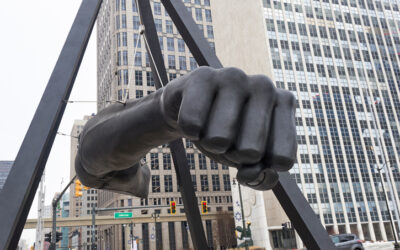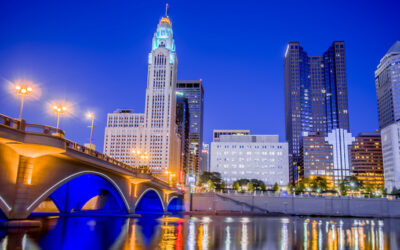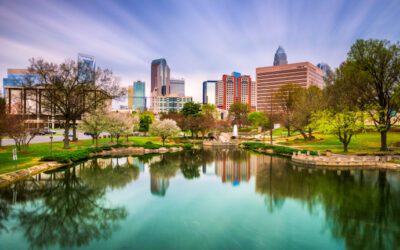Washington, D.C. is a melting pot of personalities, languages and lingo. Not everyone in D.C. may speak English (we got a lot of embassy staff and immigrants), but if you want to get around town, you need to catch up on a few key phrases; ways of referring to places and parts of town so you don’t get lost and end up in a different state.
From the District and throughout the DMV you will find little things that confuse you when you first get here. Pay attention, you need to learn this stuff, so let’s jump into what makes Washington, D.C. so unique and confusing.
Washington with an “R”
You know you are really from Washington, D.C. if you pronounce Washington as “Warshington.” This pronunciation is hard to fake, especially if you have never heard it before. Very old, established families pronounce it this way. Don’t even try to if you aren’t from here. Most people do pronounce it “Washington” on a regular basis. You will not be mocked.
The Beltway
Yes, this is technically I-495, the ring road around D.C., but you either live inside the Beltway or out of it and you better know which side of the line you land on.
The District
Many people don’t actually know that the D.C. stands in the name Washington, D.C. means District of Columbia. Since Washingtonians love to shorten names, the city name has evolved into the District. After all, Washington, D.C. is part of a much larger metropolitan area, so when you want to talk about the city itself, most people refer to it as The District.
The DMV
Washington, D.C. is one of a three-part area that makes up the DMV. You will often hear radio hosts refer to events in the DMV, and what they mean is the District, Maryland and Virginia. The DMV encompasses the city of Washington, D.C. plus all of the surrounding suburbs, as many people commute in from Virginia and Maryland to work every day. The DMV is not where you register your car or get a driver’s license.
Shorten Everything
Instead of saying “Dupont Circle” we say “Dupont.” Logan (Logan Circle) and Tenley (Tenleytown) are two other areas you will rarely hear being referred to in their full form.
Quadrants
In order to tell someone where to meet you, you need to know where you are going first. D.C. is split into four very oddly shaped quadrants (NW, SW, NE, SE), so the direction after the street name is the key to getting around.
H Street Corridor
The H Street Corridor is a group of east-west streets that encompasses a few neighborhoods, but most notably the Near Northeast neighborhood (yes, that’s a thing). H Street is also where the street car runs in D.C.
NoMa
NoMA is becoming a neighborhood all its own it seems, but what it really means is North of Massachusetts Avenue. It is also located north and east of Union Station. NoMa runs into the H Street Corridor and is part of the Near Northeast neighborhood (sort of).
The Metro
It’s the Metro, not the subway or the “El” around here. We also refer to the Metro via the color line you will take, for example taking the Red Line, Silver Line, etc.
The Mall
No, this is not a shopping center. This is the National Mall, where you will find the Washington Monument, many of the free Smithsonian Museums, and loads of government offices.
Georgetown Waterfront
Local D.C. residents refer to the Georgetown Waterfront as simply “the Waterfront.” The problem is, everywhere there is a waterfront and Maryland has it’s own too, so it can be confusing. Double check to make sure you are going to the correct one.
National Harbor
It is very important to understand that there are two National Harbors in the DC area. One is in Fort Washington (an MGM casino is currently being built there) and there is one in Baltimore where you will find the National Aquarium.
The Hill
The Hill can sometimes refer to the Capital Hill neighborhood, but it can also refer to the building where the U.S. Senate and House of Representatives meets. Government workers may work on the Hill and live in the Hill. It’s confusing, but people figure it out. Just listen to the context it is being used in.
Chinatown AKA Penn Quarter
The running joke in D.C. is that there are no Chinese people in Chinatown. There are a few Chinese restaurants though. You are more likely to find a new restaurant by a celebrity chef and young urbanites checking out the National Portrait Gallery or families wandering into the Newseum and International Spy museum than researching Chinese history in Chinatown though. The Verizon Center and multiple theaters call this area home. Gone are the days when this was a thriving neighborhood filled with Chinese immigrants.
Don’t Be a Bama
Finally, here is one slang term you don’t want to be called in DC. A “bama” is someone who is out of style, out of place, or just downright tacky. While the term is generally an insult, in the right situation can be a term of endearment among close friends.
According to the Washington Post, the term is a derivative of Alabama. It essentially has its origins as a way to describe rural folks whose manners and styles didn’t quite mesh with the refined ways of the District. In other words, if you are a bama, you aren’t cool at all. This isn’t some millennial turn of phrase either, bama goes at least as far back as the 1970s.


